Dione – Learn Fun Facts On Saturn’s Fourth Moon
Cratered & Cracked
Discovered in 1684 by Giovanni Cassini, Dione is the 15th largest moon in the solar system. It is composed primarily of water-ice and is very similar to its neighbouring moons Rhea and Tethys which also orbit close to Saturn. Dione completes an orbit of Saturn every 2.7 days, despite orbiting at about the same distance as Earth’s Moon does from Earth!
Fast Summary Facts About Dione!
- Discovered: March 21st 1684, by Giovanni Cassini
- Name: From Greek mythology, Dione is the mythical sister of Kronus (Saturn in Roman)
- Size: Diameter of 1,122 kilometres (697 miles)
- Moon Rank: 15th Largest in the solar system
- Orbit: Prograde and Circular
- Orbit Radius: 377,400 km from Saturn
- Orbital Period: 2 Days, 17 Hours, 41 Minutes
- Density: 1.478 g/cm3
- Surface Temperature: -186 °C (87 K)
- Surface: Water-ice
- Atmosphere: Tenuous (exosphere)
More Cool Fun Facts About Saturn’s 4th Major Moon!
- Despite the moon being discovered in 1684, and initially called Saturn IV (being the 4th moon from Saturn), it wasn’t until 1847 that its name was changed to Dione to avoid confusion after additional moons around Saturn were discovered.
- Dione was one of four to be discovered by Giovanni Cassini (along with Tethys, Rhea and Iapetus).
- Dione is similar to the moons Rhea and Tethys; they are all small, cold and airless bodies.
- Dione is the fourth moon from Saturn and orbits at about the same distance as Earth’s Moon, but because of Saturn’s larger mass (95 times bigger), Dione orbits ten times faster!
- Like many moons, Dione is ‘tidally locked’ to Saturn as it orbits; meaning the same face of Dione always faces Saturn. This is similar to Earth’s Moon!
- Dione also shares its orbit with two much smaller trojan moons that are gravitationally bound at Dione’s Lagrangian points; the trojan moon Helene is ahead (L4) and Polydeuces behind (L5).
- Dione is also in resonance with the two nearby inner moons, Mimas and Enceladus, helping to tidally heat Enceladus (and Dione) due to the 1:2 resonance.
- Dione’s density is 1.48 times that of liquid water which suggests Dione is 2/3rd water-ice and 1/3rd rocky material!
- Dione’s high water-ice content is evident from its high reflectivity (Albedo).
- According to data from the Cassini spacecraft, Dione has a global liquid water ocean ~65 km thick under an icy shell that is ~100 km thick; likely the result of tidal heating.
- Images from the Cassini spacecraft also reveal that the trailing hemisphere is darker in colour due to the natural darkening which occurs to water-ice over millions of years as radiation alters its surface. The lighter-coloured leading hemisphere is painted with young icy dust from Saturn's E-ring; formed from tiny particles ejected from Enceladus’ geysers!
- The Voyager spacecraft (1 & 2) observed Dione ‘up-close’ for the first time, revealing a surface with a varied cratering history as well as “wispy” lines which the later Cassini spacecraft, revealed to be bright fractures and ice cliffs several hundred meters high and that extend across Dione for hundreds of kilometres. Predominately on the trailing hemisphere.
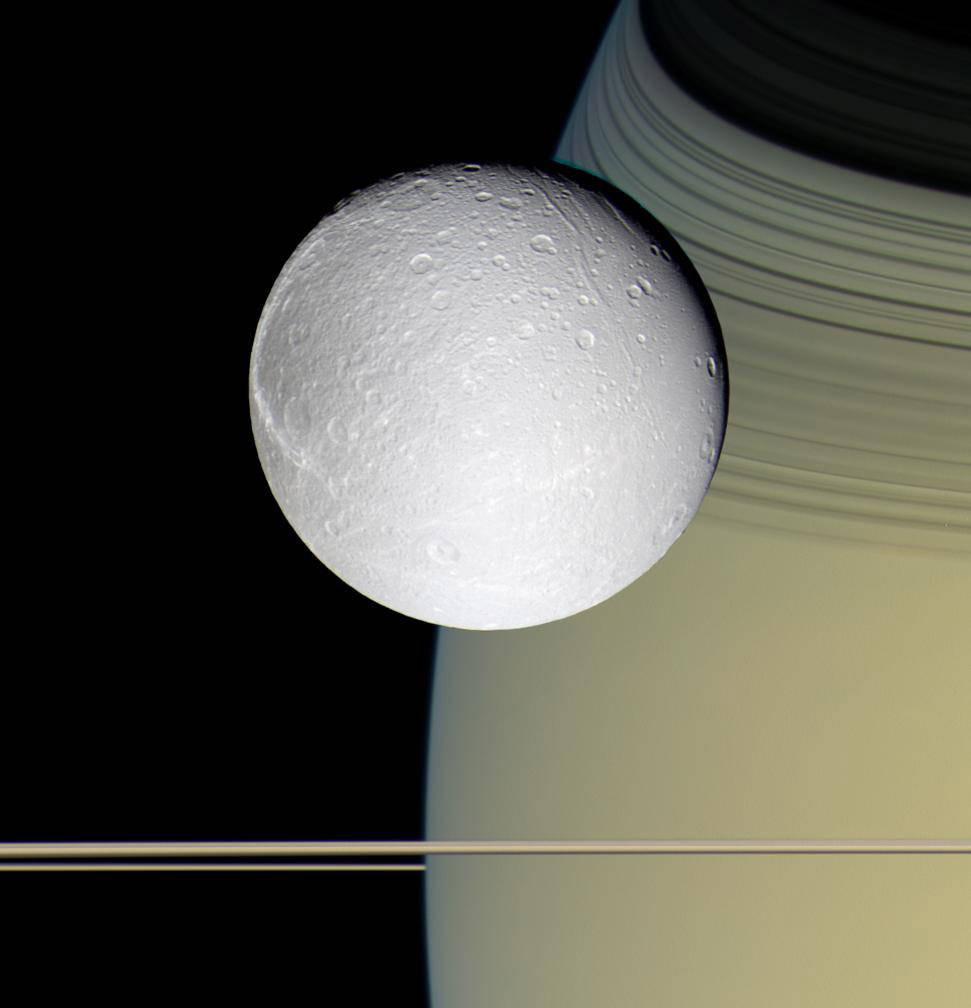
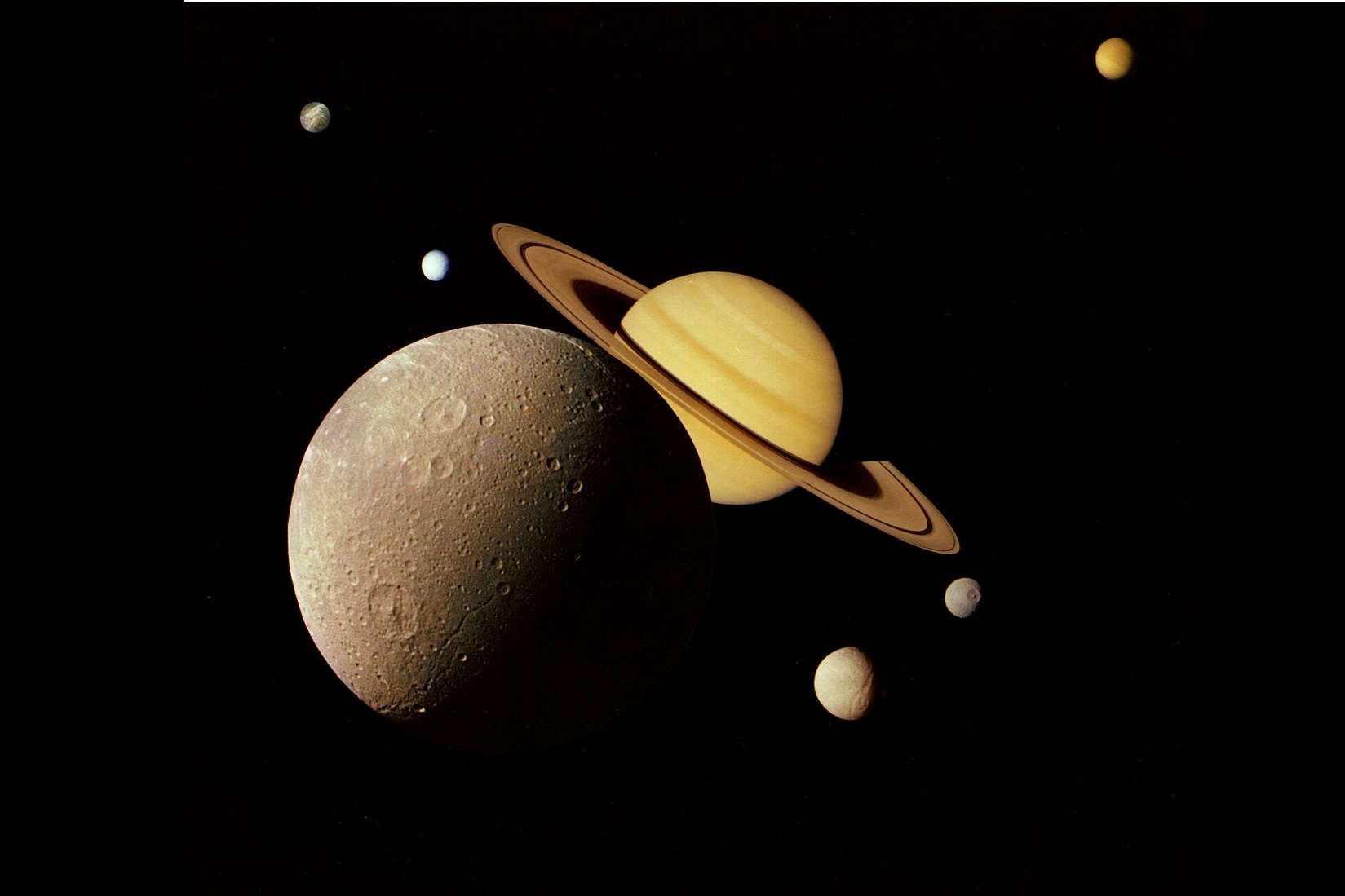
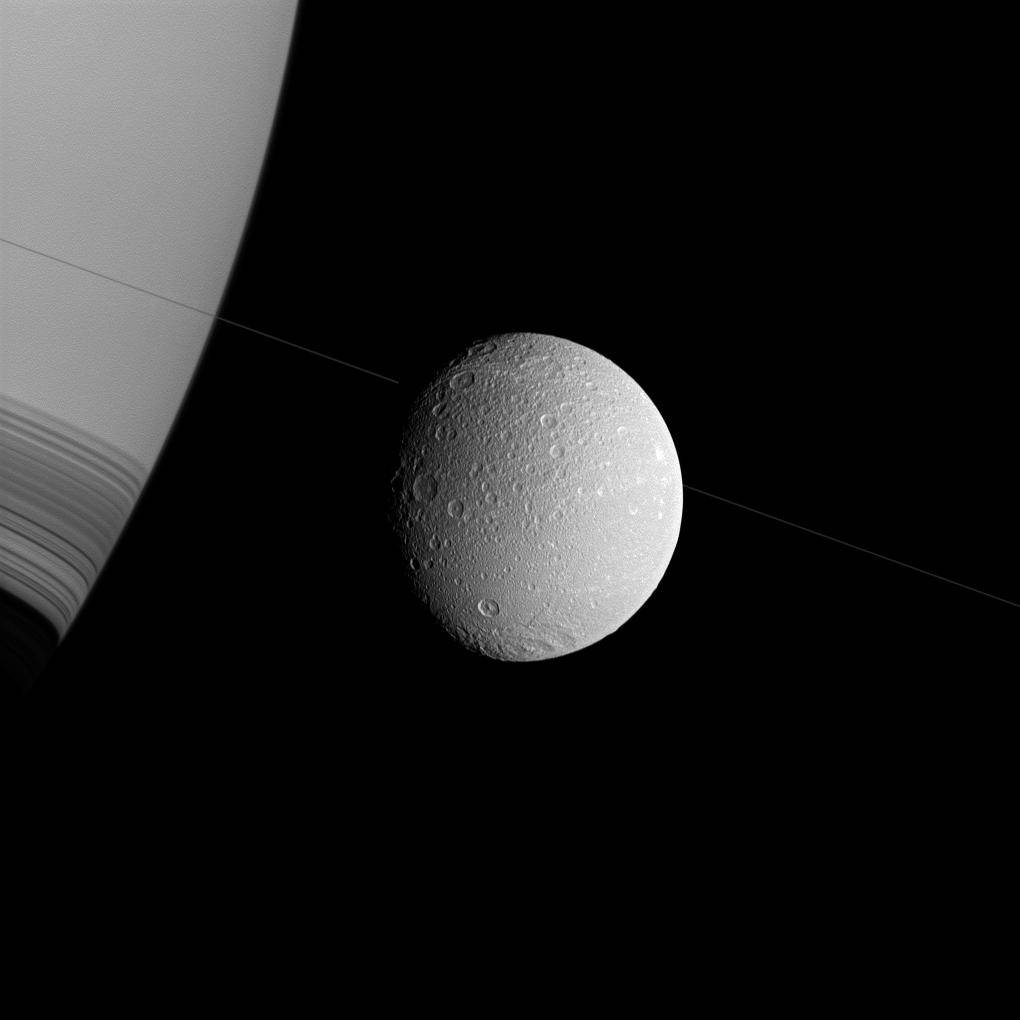
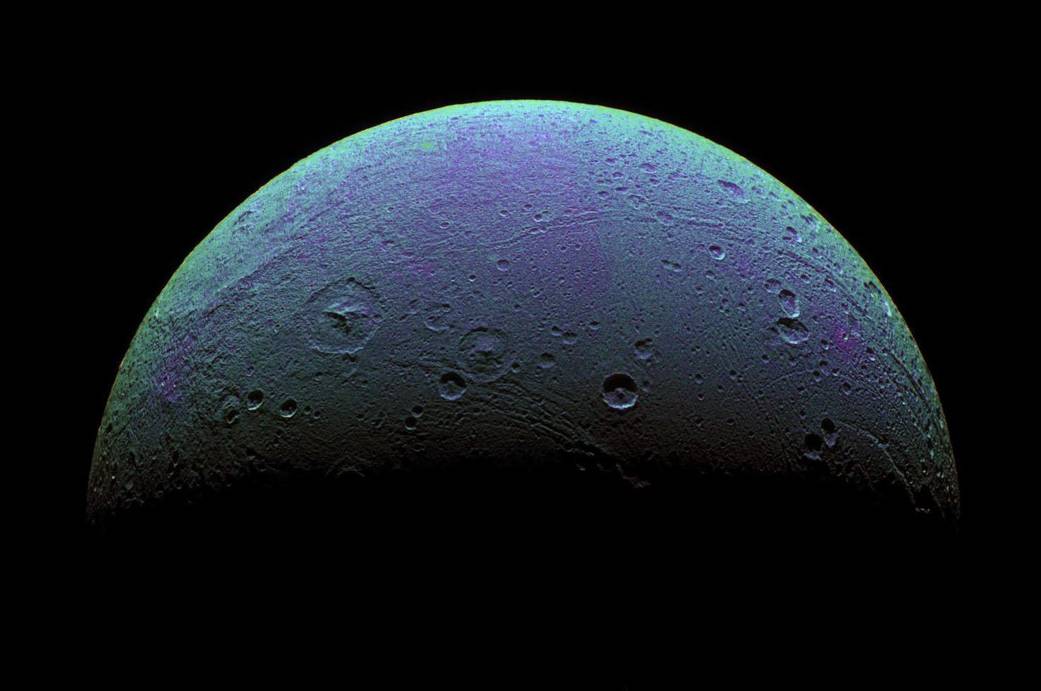
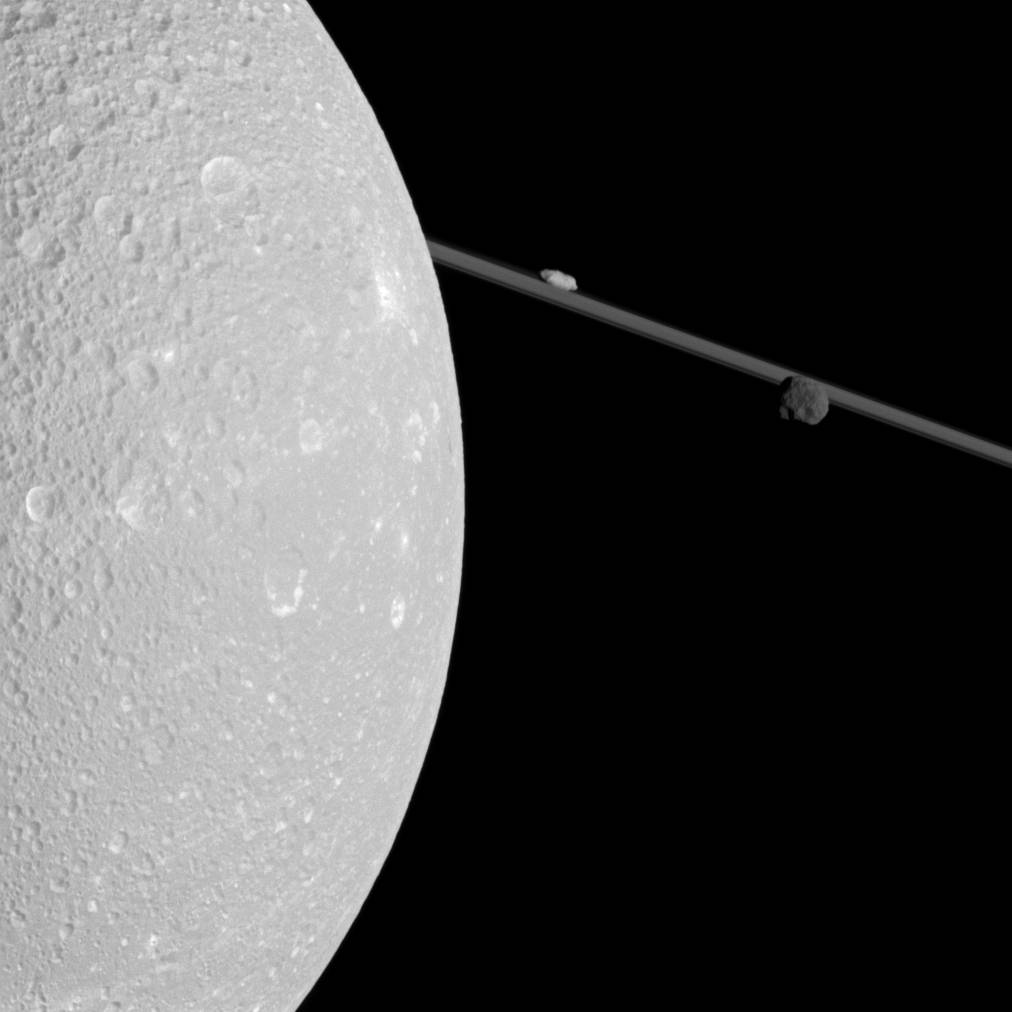
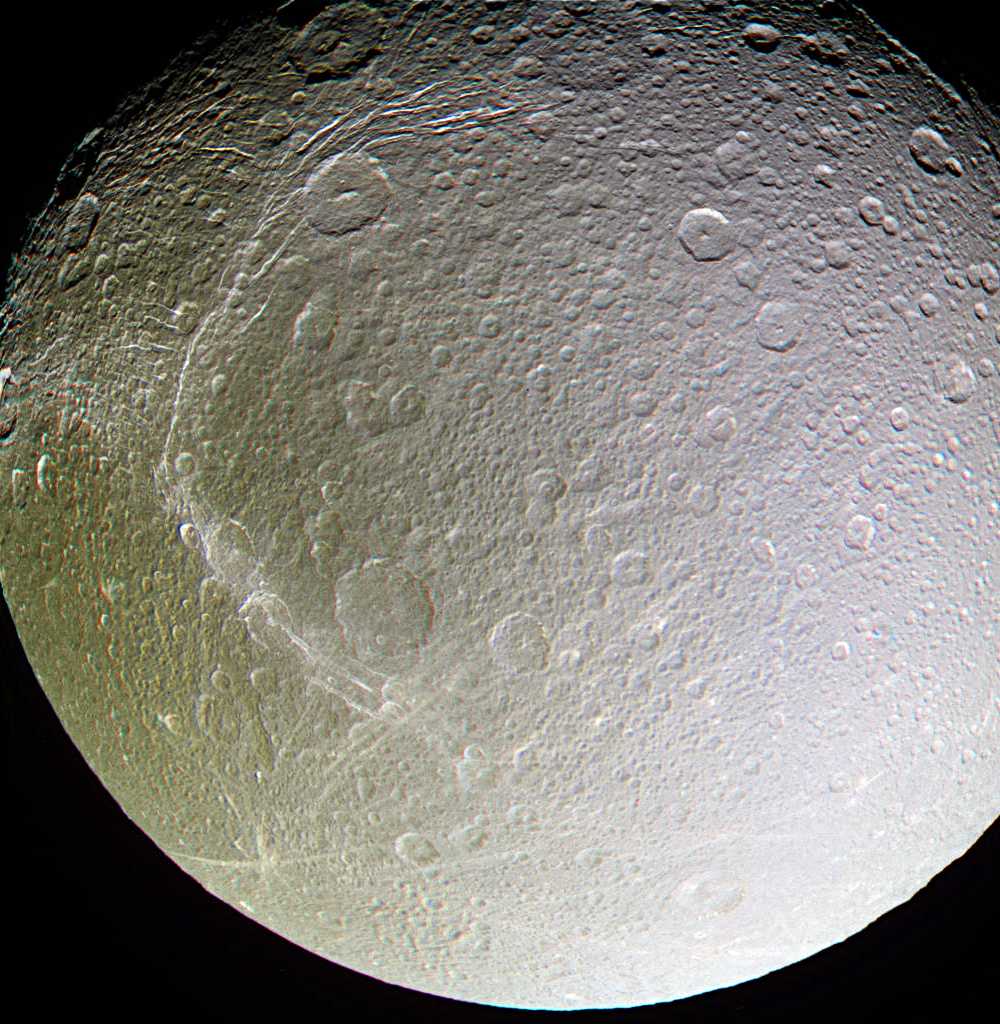
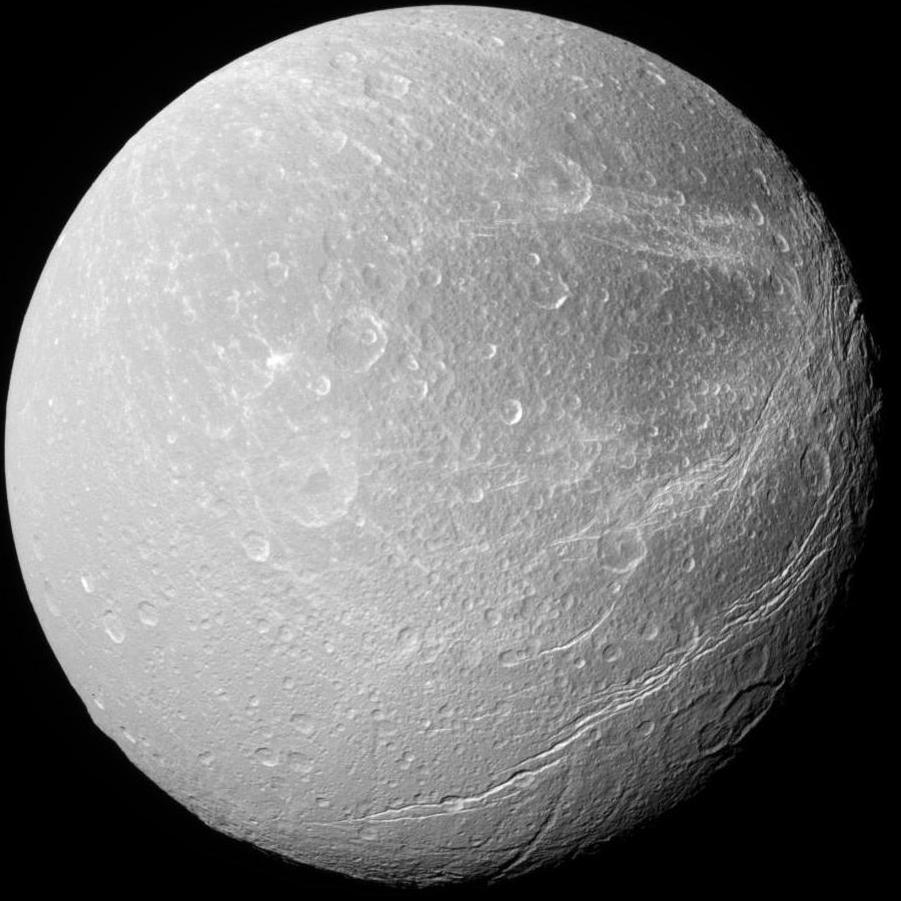
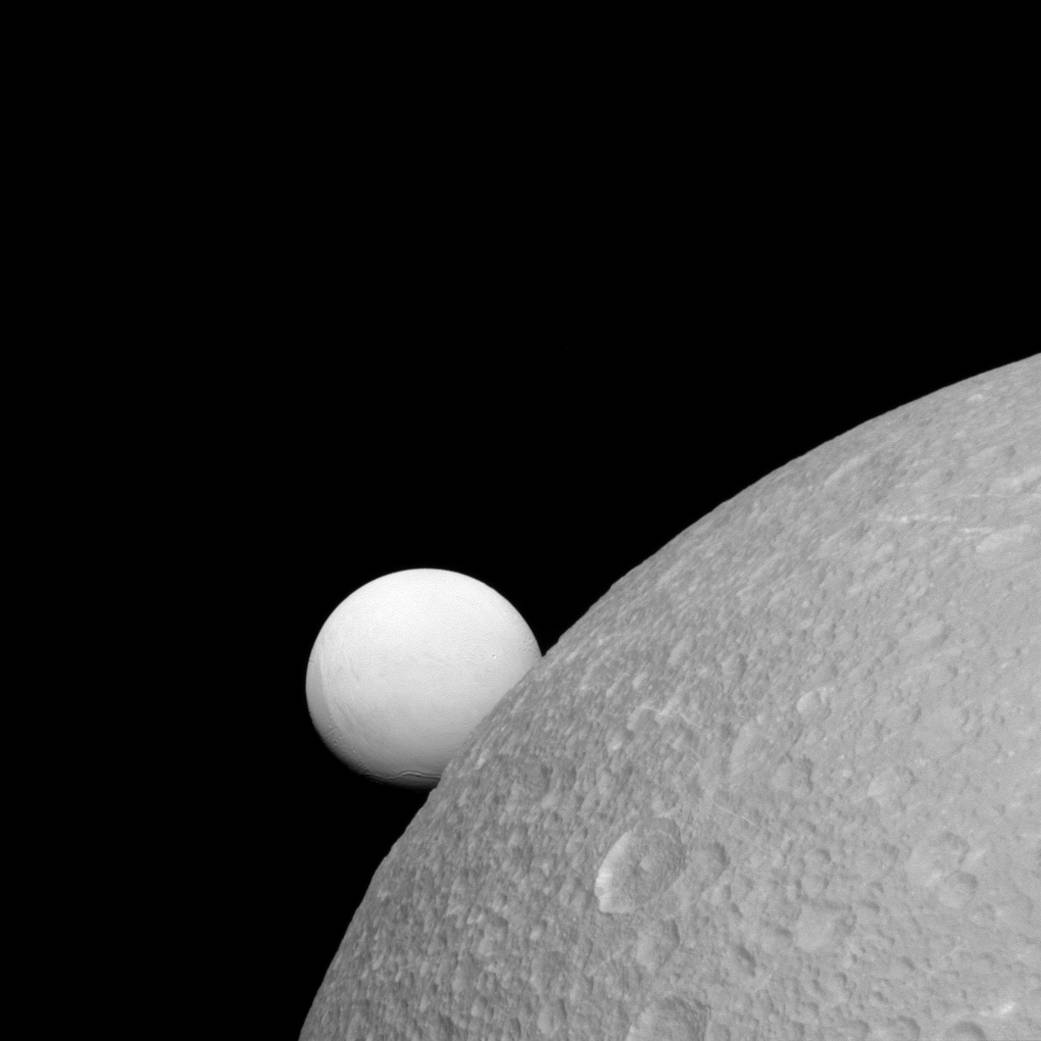
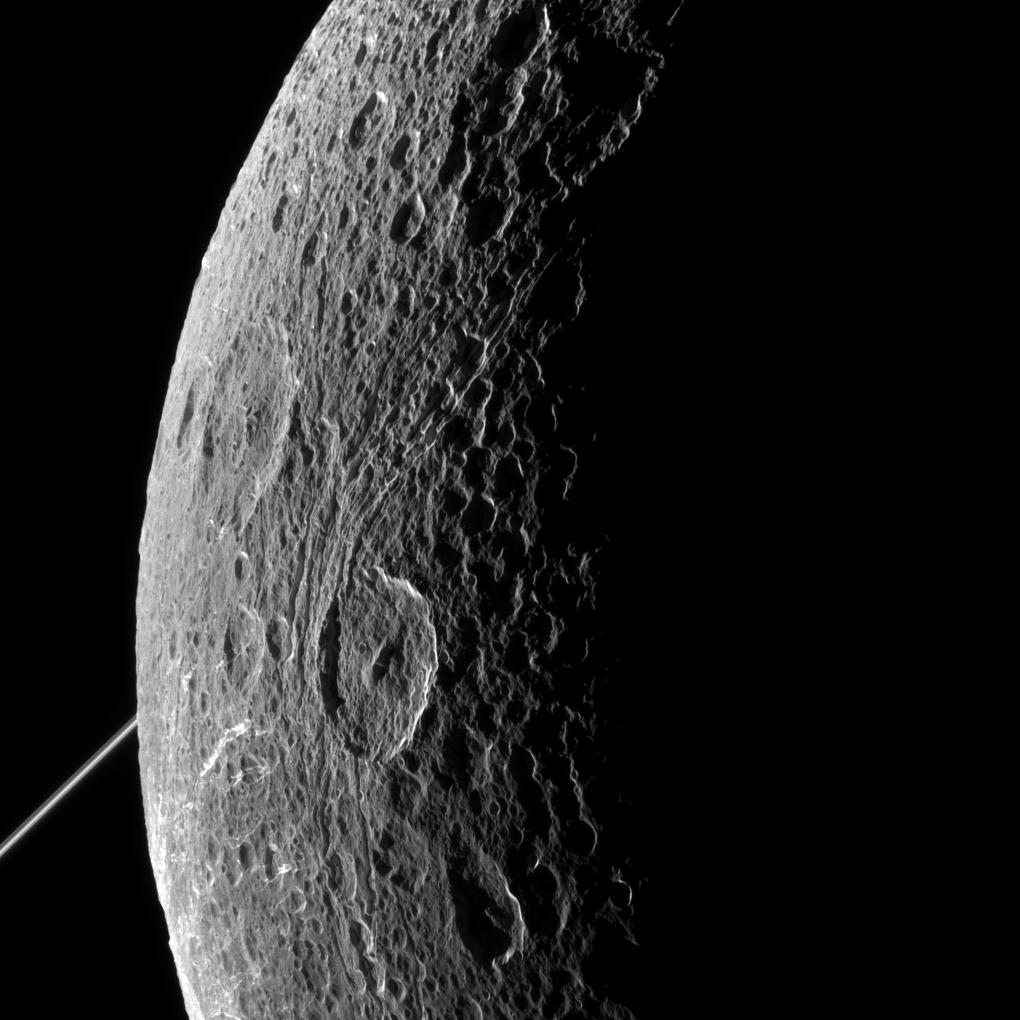
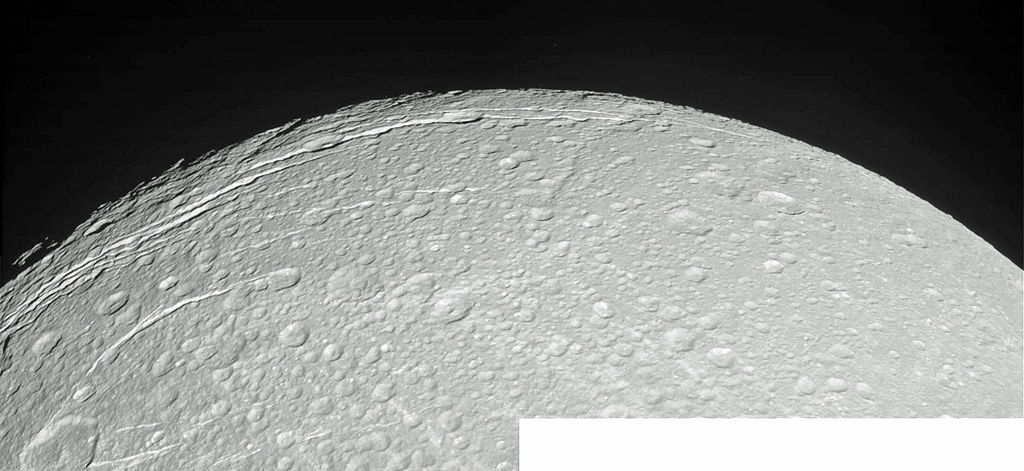
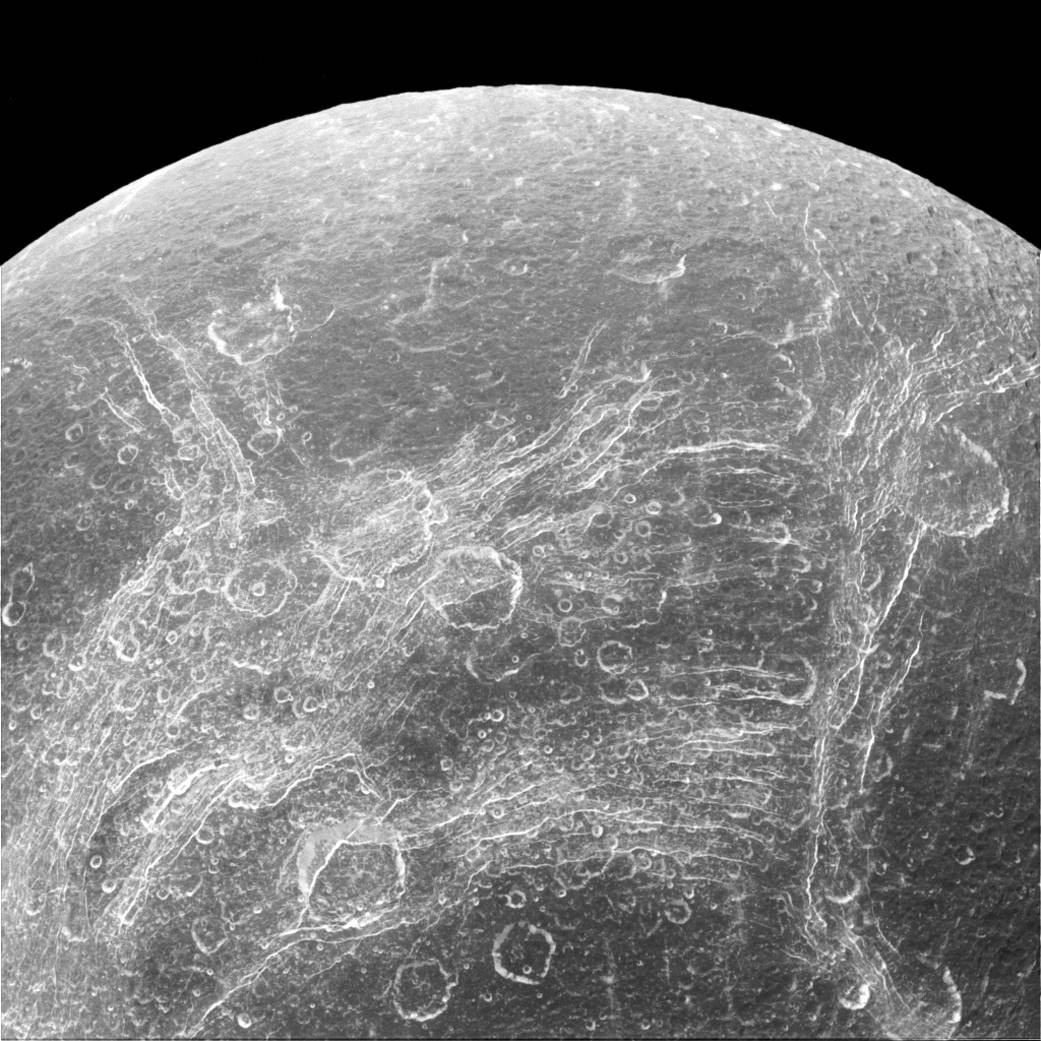
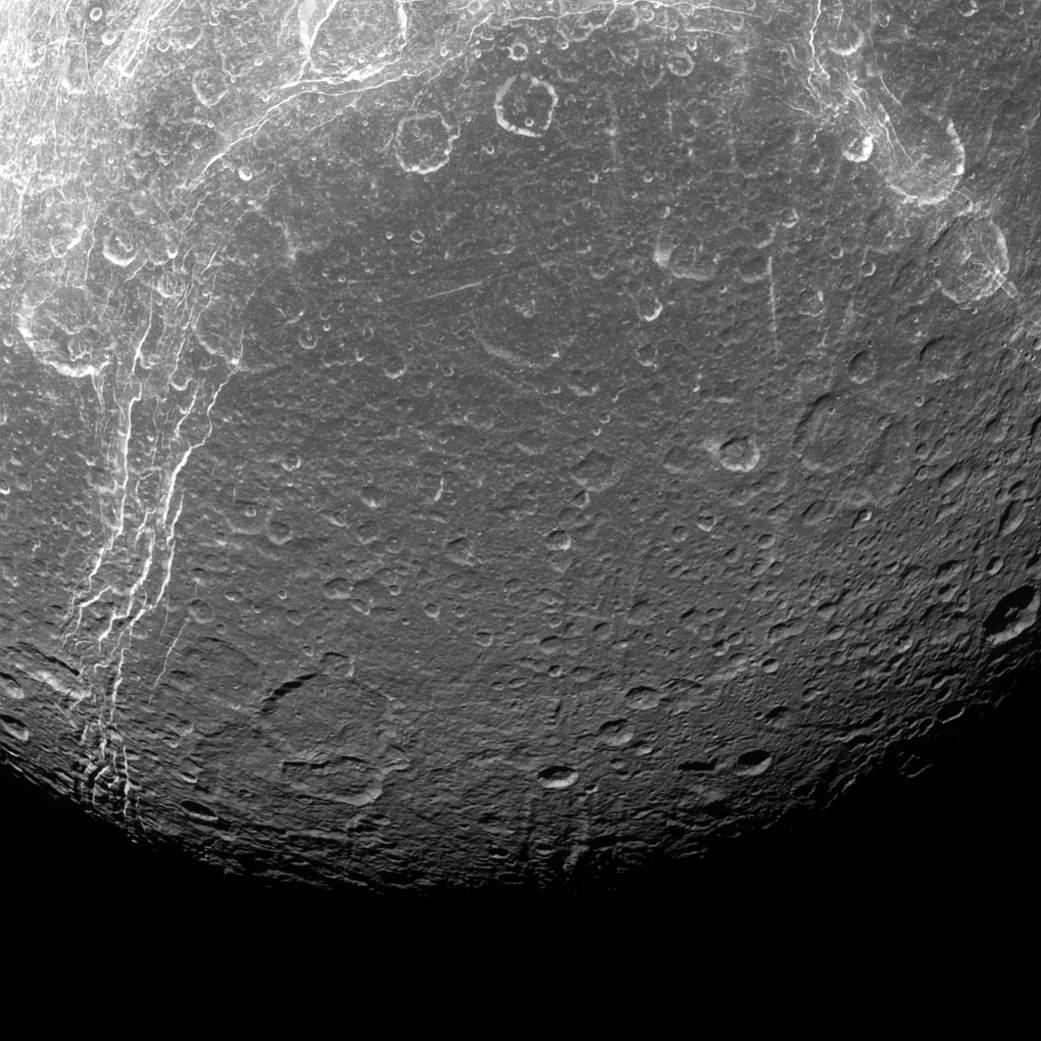
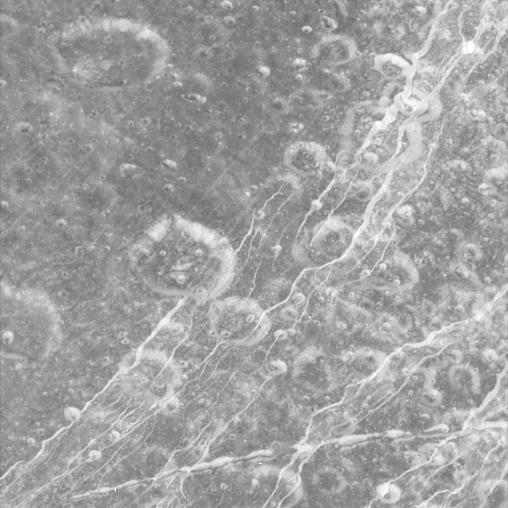
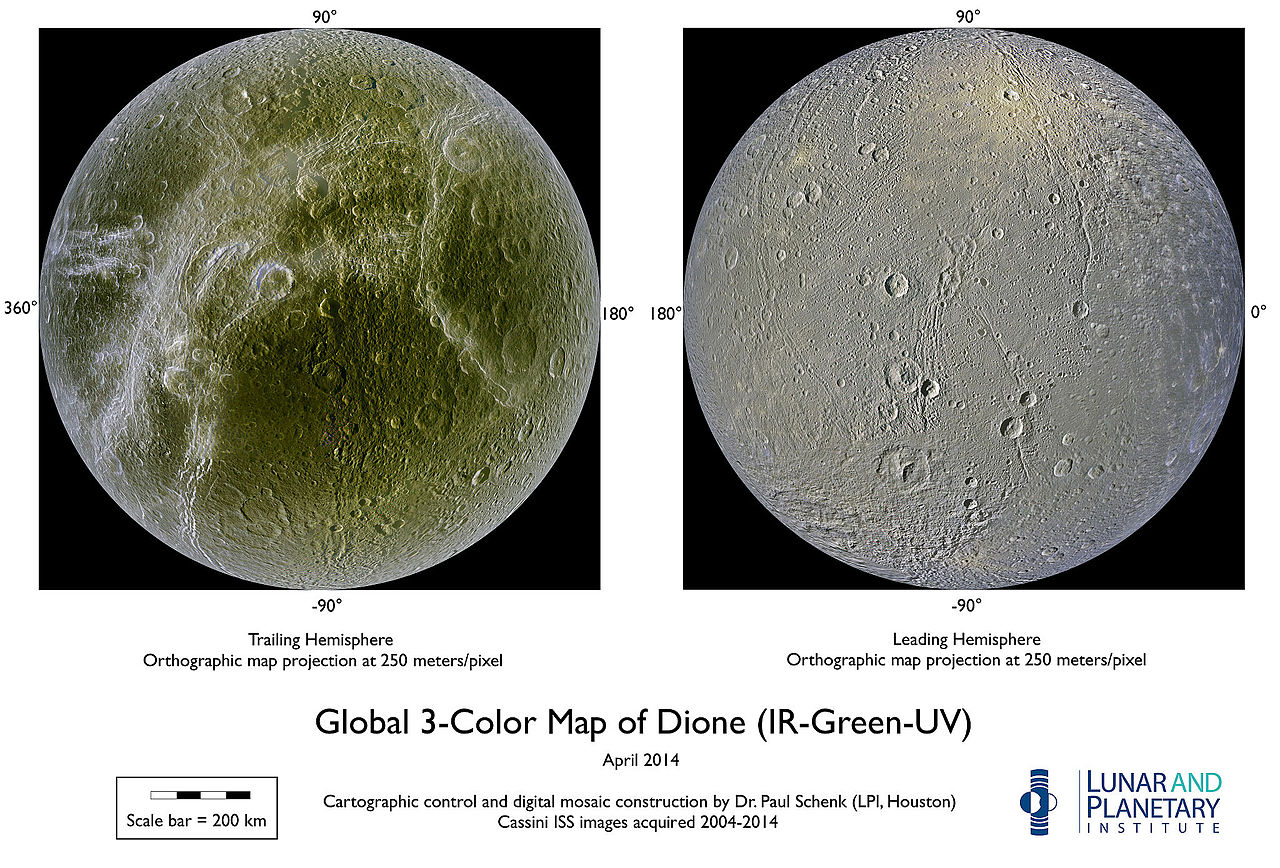
Day On Dione
Saturn Montage
Cratered Sphere
Ancient Activity
Three Moons
Discoloured Leading Side
Chasms And Cracks
On Dione's Horizon
Dione's Terminus Details
Dione Limb
Chasms
Fractures And Streaks
Dione Closeup
Dione's Two Faces


















